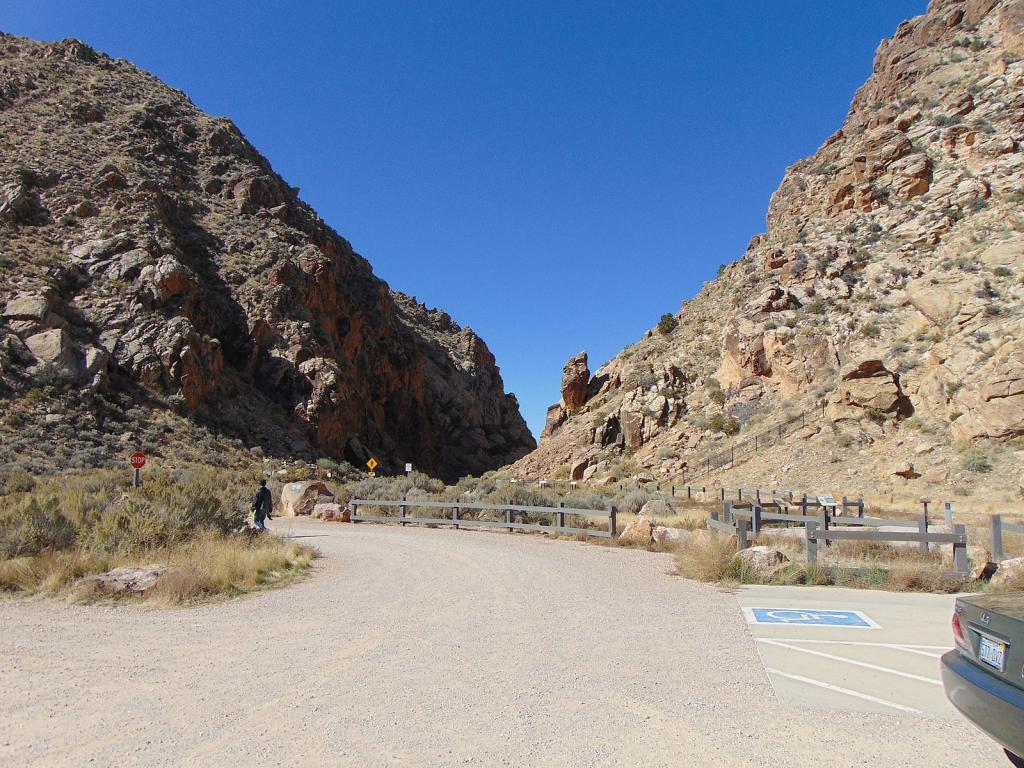
Wikimedia Commons public domain photograph
***
I was saddened, just now, to learn of the death of V. Garth Norman last week. He was a dedicated pioneer of modern Latter-day Saint scholarship on Mesoamerica and the Book of Mormon. More personally, he offered more than once to take me on a tour of the Parowan Gap in southern Utah’s Iron County, where he believed that some of the Native American petroglyphs represented solar and lunar calendars. Like so many things in my life, I didn’t get around to taking him up on his offer — and now that opportunity is gone forever.
***
If you missed these articles, which were published in a prior number of Interpreter: A Journal of Latter-day Saint Faith and Scholarship, I invite you to take the opportunity to read them:
Daniel C. Peterson, “Better Kingdom-Building through Triage”
Abstract: We are called to take the Gospel to the entire world, but our numbers are few and our time and resources are limited. This is where cold calculation can help. A field-surgical technique pioneered during the Napoleonic Wars of the early nineteenth century and refined in the butchery of World War I a century later offers a useful model for making our missionary efforts more efficient and more effective.
Taylor Halverson, “Nephi’s Gethsemane: Seventeen Comparisons from the Literary Record”
Abstract: This note explores a literary comparison between Nephi’s confronting of Laban and shrinking from the act of shedding blood, to Jesus’s experience in the Garden of Gethsemane of shrinking from the act of shedding blood. Comparing these two stories suggests that we can profitably read Nephi’s experience with Laban as Nephi’s personal Gethsemane.
Review of Raphael Lataster, Questioning the Historicity of Jesus: Why a Philosophical Analysis Elucidates the Historical Discourse (Leiden, Netherlands: E. J. Brill, 2019). 508 pages. Hardback, $210.
Abstract: In a recent book, Raphael Lataster correctly argues that the acceptance of the general premises of New Testament scholarship, exemplified in the writings of Bart Ehrman, brings into question whether Jesus ever existed. Latter-day Saints who are serious about their witness of Jesus Christ need to be aware that acceptance of these presuppositions undermines their witness of the reality of Jesus Christ and his atonement and makes their faith vain.
David E. Bokovoy, “Ancient Temple Imagery in the Sermons of Jacob”
Abstract: This essay makes a compelling argument for Jacob, the brother of Nephi, having deep knowledge of ancient Israelite temple ritual, concepts, and imagery, based on two of Jacob’s sermons in 2 Nephi 9 and Jacob 1-3. For instance, he discusses the duty of the priest to expiate sin and make atonement before the Lord and of entering God’s presence. Jacob quotes temple-related verses from the Old Testament, like Psalm 95. The allusions to the temple are not forced, but very subtle. Of course, Jacob’s central topic, the atonement, is a temple topic itself, and its opposite, impurity, is also expressed by Jacob in terms familiar and central to an ancient temple priest. The temple is also shown as a gate to heaven.
[Editor’s Note: Part of our book chapter reprint series, this article is reprinted here as a service to the LDS community. Original pagination and page numbers have necessarily changed, otherwise the reprint has the same content as the original.
See David E. Bokovoy, “Ancient Temple Imagery in the Sermons of Jacob,” in Temple Insights: Proceedings of the Interpreter Matthew B. Brown Memorial Conference, “The Temple on Mount Zion,” 22 September 2012, ed. William J. Hamblin and David Rolph Seely (Orem, UT: The Interpreter Foundation; Salt Lake City: Eborn Books, 2014), 171–186. Further information at https://interpreterfoundation.org/books/temple-insights/.]
Abstract: The Semitic/Hebrew name Samuel (šĕmûʾēl) most likely means “his name is El” — i.e., “his name [the name that he calls upon in worship] is El” — although it was also associated with “hearing” (šāmaʿ) God (e.g., 1 Samuel 3:9–11). In the ancient Near East, the parental hope for one thus named is that the son (and “his name”) would glorify El (a name later understood in ancient Israel to refer to God); or, like the biblical prophet Samuel, the child would hear El/God (“El is heard”). The name šĕmûʾēl thus constituted an appropriate symbol of the mission of the Son of God who “glorified the name of the Father” (Ether 12:8), was perfectly obedient to the Father in all things, and was the Prophet like Moses par excellence, whom Israel was to “hear” or “hearken” in all things (Deuteronomy 18:15; 1 Nephi 22:20; 3 Nephi 20:32). Jesus may have referred to this in a wordplay on the name Samuel when he said: “I commanded my servant Samuel, the Lamanite, that he should testify unto this people, that at the day that the Father should glorify his name in me that there were many saints who should arise from the dead” (3 Nephi 23:9). Samuel the Lamanite had particularly emphasized “believ[ing] on the name” of God’s Son in the second part of his speech (see Helaman 14:2, 12–13) in advance of the latter’s coming. Samuel thus seems to use a recurrent or thematic rhetorical wordplay on his own name as an entry point to calling the Nephites to repent and return to living the doctrine of Christ, which activates the blessings of the atonement of Jesus Christ. Mormon took great care to show that all of the signs and prophecies that Samuel gave the Nephites of Zarahemla were fulfilled at the time of Jesus’s birth, death, and resurrection as Jesus glorified the Father’s name in every particular, and found further fulfillment in some particulars during Mormon’s own life and times.
***
Shamelessly, the Church of Jesus Christ of Latter-day Saints is seeking to involve and implicate others in the horrors it perpetrates. This appalling effort definitely puts us deep in Christopher Hitchens Memorial “How Religion Poisons Everything” File© territory:
“Be part of the greatest story ever told | #LightTheWorld with Love 2021”











